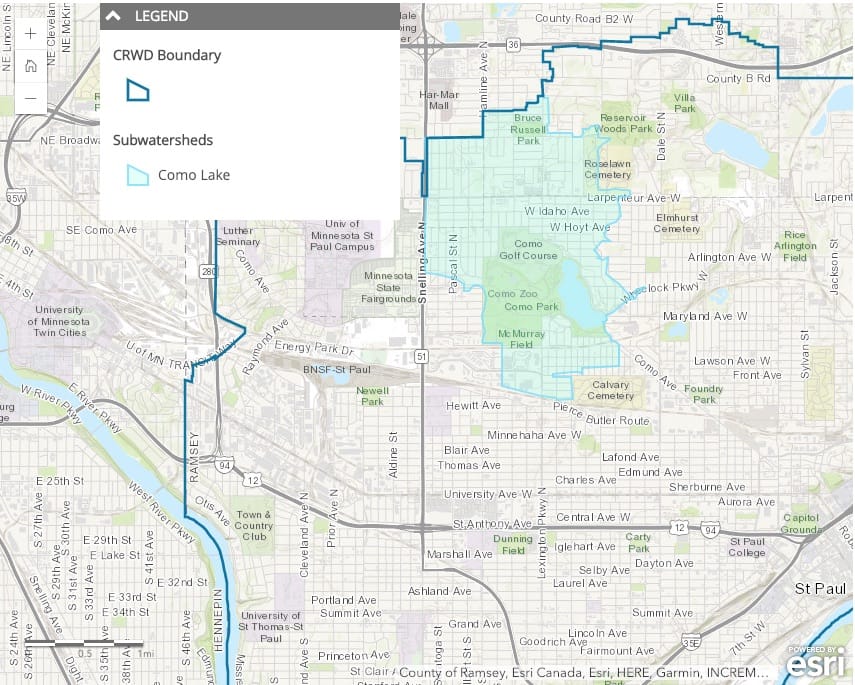
Crosby and Little Crosby Lakes
Crosby Lake Background
Little Crosby Lake
Crosby Lake Health
Because the lake receives little local drainage, water quality of Crosby Lake is generally good, with total phosphorus concentrations below the state standard for shallow lakes. However, the lake is showing signs of pressure from high nutrient loads, invasive species such as carp and Curly-leaf pondweed, and altered hydrology. One of the unique aspects of Crosby Lake is that it resides in the floodplain of the Mississippi River. Therefore, the two water bodies exchange water under high-flow conditions, resulting in the potential exchange of nutrients and aquatic organisms. Flooding from the river is likely causing high nutrient concentrations in sediment, though such inundation is impossible to control.
Crosby Lake Projects
-

Highland Ravine Stabilization
Go To Project
Crosby Lake Management Plan
In 2012, CRWD and its partners created a management plan for Crosby Lake. The City of Saint Paul owns and maintains the park surrounding Crosby Lake, Crosby Farm Regional Park. Together with the City of Saint Paul and many other stakeholders, the plan helps decide a long-term strategy for protecting Crosby Lake. Water quality goals identified by the plan include:
- Meet state water quality standards for total phosphorus loading. This requires an approximately 47% reduction in watershed phosphorus loading.
- Develop long-term targets for plant and fish diversity as surveys and data are collected. Target an excellent rating for the submerged aquatic vegetation population using the Floristic Quality Index (Nichols, 1999). Target a good Index of Biotic Integrity score once the IBI has been completed by the Minnesota DNR.
- Reduce total suspended solids (TSS) in direct discharge to the Mississippi River from the watershed.
- From the Crosby Lake sub-watershed an approximately 66 percent reduction in total phosphorus loading in direct discharge to the Mississippi River.
-
Crosby Lake Management Plan

